Warning for Wyoming hikers as ‘monstrous’ animals eating 20,000 calories a day are on the prowl
Hunters on the Great Plains may find they are no longer at the top of the food chain as the approach of winter sends nature’s predators into a frenzy.
Hundreds of furry omnivores are facing a life-and-death struggle to get fat before spending months in hibernation, and they’re not about to let anyone stand in their way.
Key food sources are in short supply this year, naturalists warn, pushing the bears closer to human populations and increasing the risk of aggression for any hiker or hunter who strays into their path.
“They can eat just about anything,” says retired federal ecologist Chuck Neal.
“It’s not a question of what, but how much they move their jaws around.”
A brown bear can weigh as much as 3,000 pounds by the time it finishes its feeding frenzy
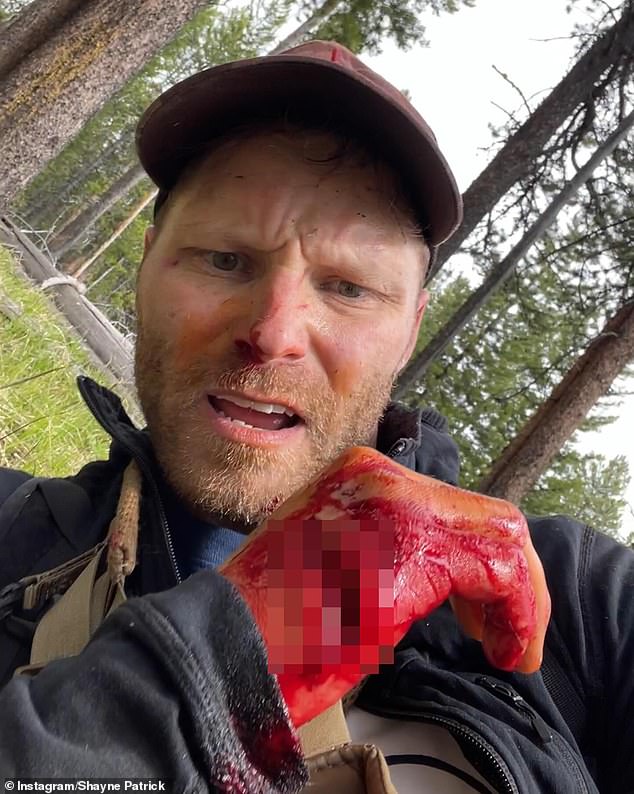
Photographer Shayne Patrick Burke, 35, from Massachusetts nearly bled to death after being attacked by a mother bear in Grand Teton National Park earlier this year
The country’s brown and grizzly bear population is currently in a state of ‘hyperphagia’: an insatiable hunger that begins in the run-up to hibernation.
They need to consume about 20,000 calories a day – and they aren’t picky about where they get them from.
“They may even consume more depending on the food source,” Neal said Cowboy stands daily.
“From July to November, they can gain 200 to 300 pounds. It’s their biology. It’s what they’ve evolved to prepare for hibernation.”
But it is known that 10 people have been killed in bear attacks in the US in the past five years, half of which occurred during the winter feeding season.
“The whitebark pine has been decimated, mainly due to mountain pine beetle outbreaks,” Neal said. “But they are very adaptable, so they had to switch to different foods.”
Georgia hunter Landon Clement said he felt like he had been “hit by a train” when he was tackled by a hungry Grizzly in Wyoming’s Upper Green River Basin on Thursday.
The 31-year-old from Blue Ridge was shooting archery with a friend when he saw a mother and two cubs feeding in the woods.
“When those bears cut off that path and came toward me, I knew I was probably going to be in trouble,” he said.
“I still had my back against a rock, and when I realized they were coming my way, I backed up even further against that rock, I was practically glued to it.”
The bears stopped when they saw the hunter before the mother decided to attack.
“She just jumped. She just charged right at me with her mouth wide open,” Clement said.
“I’ve never seen anything move so fast, she covered those ten to twelve meters in less than a second.”
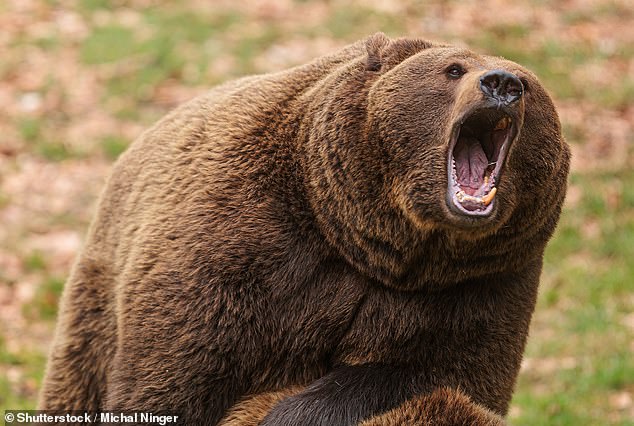
More than 1,000 grizzly bears and as many as 650 black bears are thought to live in Wyoming, all of which currently spend up to 22 hours a day feeding
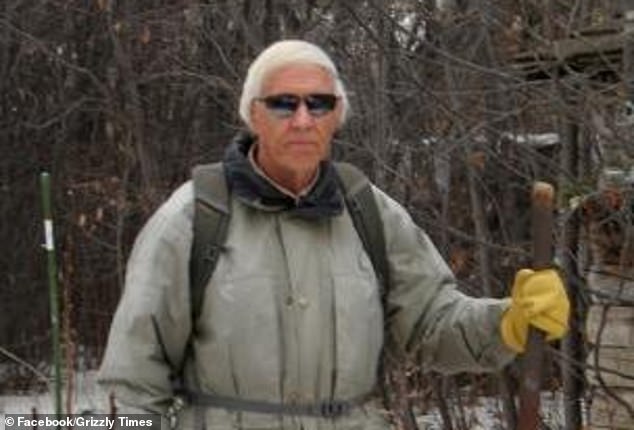
“They can eat just about anything,” says retired federal ecologist Chuck Neal.
The hunter tried to fire his semi-automatic pistol at it, but discovered that the mechanism was stuck.
“It bit my left thigh and wouldn’t let go,” he explained. ‘He just bit my thigh and started shaking his head.
“With the bear still clinging to my leg, I was finally able to look down and see that my gun was stuck.
‘When I had cleared the jam, I placed the gun as close to his head as possible and fired a few more times. It let go and rolled off me. I knew I killed that bear.”
A disabled Army vet nearly bled to death after being attacked by another mother bear in Grand Teton National Park in Wyoming earlier this year.
Shayne Patrick Burke, 35, of Massachusetts had traveled to the reservation to take photos when he was attacked on Signal Mountain.
He was only saved when he pushed a can of bear spray into the animal’s jaws and it bit down, causing the container to explode.
More than 1,000 grizzly bears and as many as 650 black bears are thought to live in Wyoming, all of which are currently feeding for up to 22 hours a day.
And their numbers have been increased by the animals that have wandered from Yellowstone National Park.
“That’s when we often see bears at lower elevations,” Neal said.
“They might show up in a cornfield outside Powell or at the bottom of the Shoshone River and eat silver buffaloberries.
“They’re looking to pack in all the calories they can, and sometimes that puts them on the periphery of their currently occupied range.”
And because their feeding season coincides with hunting season, many hope to get a share of the spoils and the “gut piles” that hunters leave behind when they eviscerate their prey.
“Hunters have a special obligation to be vigilant because they put the food on the ground,” Neal said.
‘Bears are looking for intestines. That’s very nutritious food, but it also brings bears close to hunting parties and men with guns.
‘The death rate among bears has increased due to human-wildlife collisions over intestinal piles.’
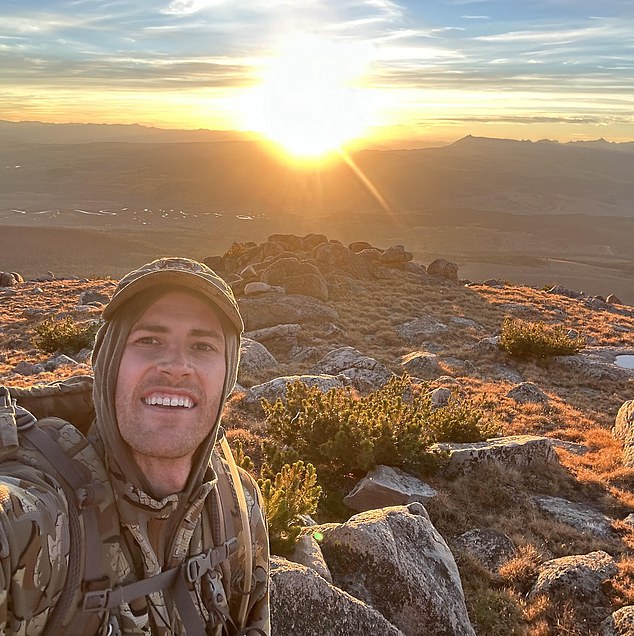
Georgia hunter Landon Clement said he felt like he had been “hit by a train” when he was tackled by a hangry Grizzly in Wyoming’s Upper Green River Basin on Thursday.
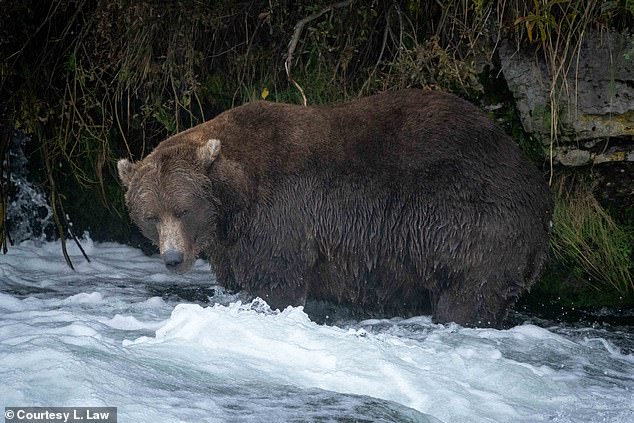
“From July to November, they can gain 200 to 300 pounds. It’s their biology,” Neal said. “It’s what they evolved to do in preparation for hibernation.”
Once the days get shorter in July, the clock starts ticking for the bears, and they will cover as much ground as necessary before retiring for the winter in November.
“The point to remember is that Wyoming has always been occupied territory for bears,” Neal said.
“The bears have been pushed back into Yellowstone country over the past century or so due to human population expansion, and they are simply trying to recolonize what they used to inhabit.
‘The possibility of more confrontations between humans and animals does exist, because they are looking for more calories during hyperphagia.’
